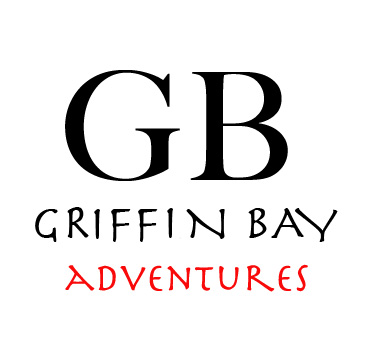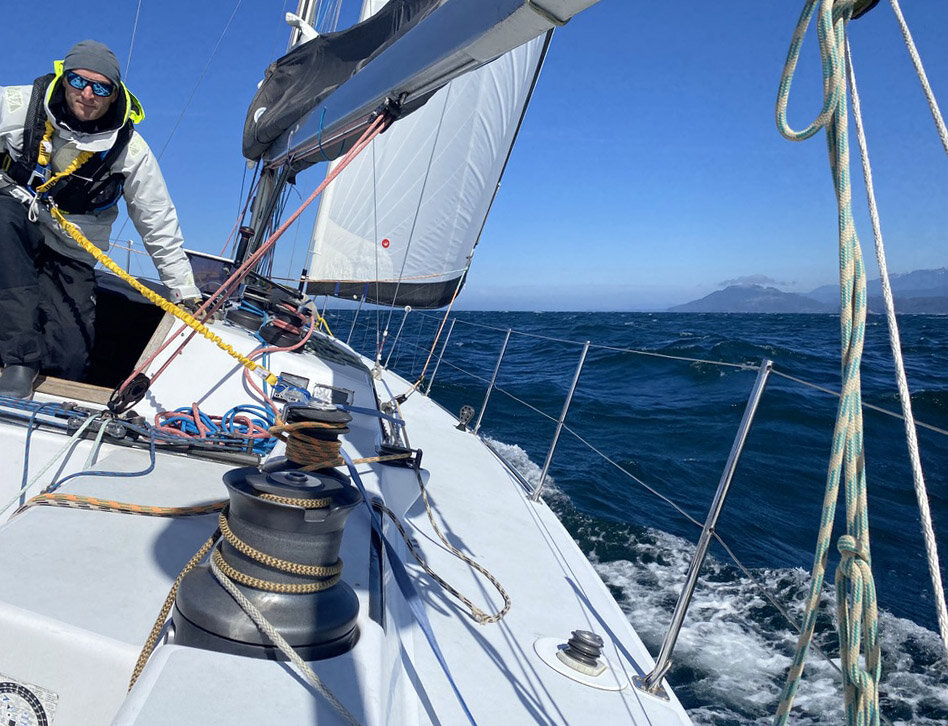ASA 106
The Advanced Coastal Cruising Class or ASA106 is the 5th level in the American Sailing Associations credited courses. This class represents the level after Coastal Navigation and is often the first time many ASA-certified sailors get the opportunity to experience night sailing. The 104 or Bareboat certification that is needed to charter boats is the highest level most students of the ASA programs achieve and due to insurance restrictions charter guests are limited to operating chartered boats in daylight hours. Some that attend the 106 are boat owners and that was the case with the crew of this class. Tom McLeod reached out to me to help him deliver his new boat from PT to Astoria a few weeks prior and Max Heckscher has owned an Ericson 35 for years. Fernando owns a beautiful Scandinavian cruising boat and Nick Duckstein used to own a Hunter he chartered out through a local outfit.
The hosting yacht was the Andrews 53 “Artemis” owned by Captain Tom Muir a friend and shipwright from Seattle and new addition to the islands. Tom is an ASA instructor of the highest order and has been in the boating industry for many decades.
The crew met on Friday and it wasn’t hard to recognize everyone because most had addended the GBA Ground School a few weeks prior. We geared up and began orienting ourselves with the powerful boat speaking at length about the importance of running backstays, something new to many of the crew.
We cast off and had killed the engine by the time we rounded Turn Island on the North end of Griffin Bay. Heading south we reviewed the weather forecast. Our plan was to sail as far out the Straight of Juan De Fuca as possible and turn around to have the crew back by Sunday evening. The forecast was for a small craft advisory later that night in the eastern end of the straight so we planned a possible layover in Port Angeles that night. By the time we were approaching PA we were under jib alone and making almost 9 knots. There was no doubt in anyone’s mind Artemis was a powerful boat. After we furled the jib in the lee of one of the anchored tankers and were motoring across the bay we noticed a small fishing boat crossing from port. As many readers know the vessel to the right is the stand-on vessel in a crossing situation like this but after no coarse correction or acknowledgment was recognized concern that we were about to collide arose. Once eminent and after yelling I called for the helm hard to starboard as ducking their stern was not an option at this point. The boat steamed by with the skipper’s head in a cooler totally ignorant of the near-miss and litigation that would have ensued.
Enough excitement for the day had the boat happily snoring away before 11 and underway before the seagulls were up. The next day the conditions had abated but the forecast called for it to fill in so we started discussing contingency plans. We decided we would sail West as long as we could and turn around when it got too rough and sail back to the San Juans to round the county via Rosario. The next excitement came when after turning around off Piller Point we were southeast of Victoria in about 25 knots and hitting the low teens surfing the wind waves under jib alone. Captain Muir was at the helm when I was tucking myself in for the first nap of the day to prepare for my watch from Midnight to 3 with Nick and Fernando when Tom yelled that he had lost steering. I responded and dived into the stern of the boat where the quadrant was to see if a cable had come free or if something had jammed between the quadrant and the stops. Seeing neither of these more common issues I put on my gear and got on deck to take what little control was left and send Tom into the back of his boat to investigate further. Tom had recently hauled his boat and replaced his rudder bearings so I knew he was familiar with the area of concern. With one foot on the emergency tiller and two hands on the wheel we rolled the jib to its smallest reefing mark and I drove the boat down the waves taking what pressure I could off the rudder. We then send a mediator to relay the communication through an open cockpit porthole to coordinate our efforts. Tom was going to have to loosen the quadrant bolts while I turned the wheel against the tiller to recenter the quadrant that had slipped off is setscrew under the loads we had been inducing as we reaching across the waves moments before. A little wiggling in concert with the waves we were surfing and we were done with the portion of the class where we have to explain the use and importance of an emergency tiller aboard.
At midnight when I was back on deck we were ghosting up the southern entrance of Rosario and as I reached for the handheld radio to hail the down-bound tug and this watch’s source of excitement, her skipper hailed us. Where do you want us skipper I said. Stay where you are, ill leave you to port.
Our next watch we watched the sun come up bleary-eyed and ready to sail out of the lee of Orcas island the tallest of the archipelago. By noon we were anchored off Jones Island and having lunch with a bunch of cruisers.
After lunch and an impromptu man overboard drill had everyone confused turning the wrong way and messing up the runners we were heading back to Friday Harbor.
We can’t underestimate the importance of the fundamentals. MOB is a part of the Basic Keelboat course material. After it is introduced in this class it must be practiced practiced practiced.







